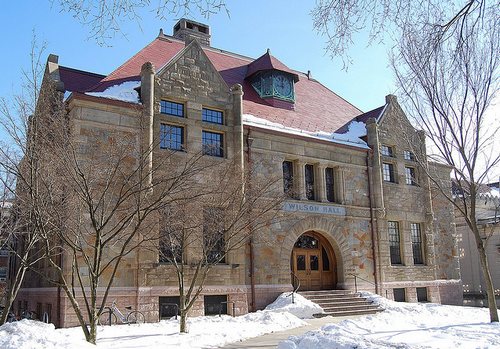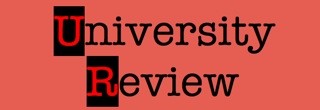Best Ivy League Schools Ranking list
Last updated March 1st, 2023: This list of Ivy league schools is based upon information curated from University Review, The Times, Jiao Tong and the USnews.
For many years running Harvard has been considered the best Ivy League University; however, it is easily seen from the rankings that all of them offer a world class standard of education.
Indeed six of the eight Ivy league universities rank in the top 10 colleges in the USA list.
| Rank | Ivy League School | PBA American University Rank | Tuition Fees (2022/23) | Yearly Cost to Attend (includes tuition, fees, housing, food, books, etc.,) | Times World | JT World | JT American | USNews American | Times American University ranking |
|---|---|---|---|---|---|---|---|---|---|
| 1 | Harvard University | 1 | $52,659 | $76,763 | 1 | 1 | 1 | 1 | 1 |
| 2 | Princeton University | 2 | $57,410 | $79,540 | 6 | 8 | 7 | 2 | 3 |
| 3 | Yale University | 3 | $64,700 (23/24) | $83,880 | 2 | 11 | 9 | 3 | 2 |
| 4 | Columbia University | 8 | $65,524 | $852,967 | 11 | 7 | 6 | 8 | 7 |
| 5 | University of Pennsylvania | 9 | $56,212 | $81,340 | 14 | 15 | 13 | 6 | 9 |
| 6 | Cornell University | 10 | $63,200 (In state fee of ~$42,702available in some schools) | $59,790 (in-state, land grant college) to $80,288 (endowed college) | 20 | 12 | 10 | 14 | 12 |
| 7 | Brown University | 18 | $65,656 (23/24) | $84,828 | 32 | 70 | 39 | 16 | 16 |
| 8 | Dartmouth College | 26 | $76,362 | $97,980 | 71 | 102 | 51 | 11 | 25 |
The Times and Jiao Tong rankings shown in this list of ivy league schools table reflect data available for world and for American colleges.
An Overview of the Ivy League University System
The term Ivy League initially referred to an athletics conference established by a group of prestigious universities and colleges in North-eastern U.S., but the name has now come to refer to the academic institutions collectively. Ivy League now refers to not only the sports conference, but also refers to the academic, admissions and social class of the eight universities as a whole.
Despite the Ivy League not coming into existence as a whole until a 1954 agreement between the Presidents of the eight institutions, the term has been in existence since at least the early 1930s. The prestigious nature of the eight Ivy League schools and their location means they are some of the oldest in the U.S. and they remain privately operated institutions – with the exception of Cornell, which has departments that are publicly funded – and charge large fees for attendance. Seven of the eight Ivy League schools were formed in the 17th and 18th centuries prior to the American Revolutionary War; only Cornell was formed after the Revolution (1865). There are only two Colonial era universities that are not members of the Ivy League.
After football became the dominant sport in U.S. colleges in the 19th century fears that the sport was becoming more important than academic success at the prestigious North-eastern colleges led to agreements being put into place about football practice and schedules. The 1916 agreement between the Presidents of Yale, Harvard and Princeton was used as the basis of the initial agreement, for what would become known as the Ivy League. An further 1952 agreement made use of the 1916 Presidents agreement of the eight colleges and universities forming a sports conference, which limited practice and drills; in 1954 the agreement was expanded to introduce an annual schedule where each team played all of the others in the conference. Calls for the formation of the Ivy League sports conference began in the early 1930s when undergraduate newspapers called for the list of Ivy League schools: Brown, Columbia, Cornell, Dartmouth, Harvard, Pennsylvania (Penn), Princeton, and Yale to form an athletic conference.
The New York Herald Tribune’s Stanley Woodward is credited with first publishing the name ‘Ivy League’ in a 1936 article in the newspaper.

The Ivy League sports conference became a great success following the 1954 agreement, and the term became used as a catch all for the eight academic institutions. All the institutions share similar academic and scholarship principles and are seen as the colleges of choice for the children of America’s social elite, though they are equally keen to cater for intelligent people from low-income backgrounds. A number of former U.S. Presidents, including both Presidents from the Bush family, were educated at Ivy League institutions. In some quarters, the Ivy League institutions have been accused of social elitism and of failing to open their doors to the majority of people wishing to attend the colleges and universities; admission rates are historically low – ranging from six to 16 percent.
The admission policies of the Ivy institutions are formed and discussed at inter college meetings between staff members from all eight colleges; cooperation between the colleges includes an intercollegiate library lending system offering the catalogue from seven of the eight college libraries to all Ivy League library members except Princeton.
Because of the prestigious nature of the Ivy League institutions, graduating from a course of study at one of these universities is often seen as a way to increase ones career chances after leaving college. Opportunities to study under some of the best minds in the world are funded by the large number of research grants given to these elite schools by Federal Government agencies and through private investment. As some of the top ranked academic institutions in the U.S., and around the world, the most impressive part of completing an Ivy League education is that the schools in the conference all feature in the top twenty 20 best schools in the U.S. every year. Now you have read this you may be wondering what is the easiest ivy league to get into? Well none of them are easy, but the ones with the highest acceptance rates are Cornell (14.9%) and Dartmouth (10.3%). Be aware that though these acceptance rates seem high that it is usually only the most academically able students who apply for a place at these institutions in the first place.
Although the level of education offered by any Ivy League School is excellent, they, and other private institutions are not the only establishments that provide a fantastic campus based learning experience. Public colleges that offer a similar collegiate experience are known as Public Ivies: See this listing of Public Ivy Schools for more details.
